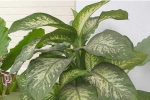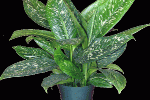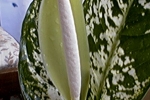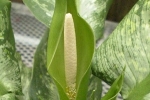Because of its spectacular leaves, Dieffenbachia is a plant widely used both in decorating homes and offices or public spaces.

It can be placed in large rooms, bright winter garden, alone or in combination with other herbs that have the same requirements to environmental factors, creating decorative arrangements.
Dieffenbachia is a species native from the rainforests of Central America and South Africa. This plant is very decorative and looks nice plume due to foliage and thick stems, which acquire the appearance of a trunk with age beautifully dressed with large leaves.
Dieffenbachia genus includes about 35 species which have received many varieties and cultivars (Camilla, compact, Bertini, tropical snow, supertropic, lemon snow, March, Vesuvius, reflector, etc.). Differences between them consist of plant size, leaf size and business model.
The plant has a rapid and continuous growth; if it has the best conditions for development .It requires a warm and humid place. The optimum temperature is 20-22 degrees C in summer and winter minimum 13 to 15 degrees C.
It is a plant that loves the light, indispensable for a beautiful coloring of the leaves, but still does not support direct sun that causes the leaf spots. Summer shading is needed, in times of heatstroke while in winter the plant must have a well-lit.
Another important factor for proper development of this species is water. This is given regularly throughout the year so that the earth is always slightly moist. Humidity should better be over 80%, this being achieved by spraying daily in the morning the leaves with water in summer.
Dieffenbachia prefers a fibrous substrate rich in nutrients, very porous, easily penetrable by roots thick and the water used in irrigation. The substrate used for planting should include ground leaves, peat moss or charcoal and vegetable, which assures porosity.
Every spring we recommend transplanting young plants total, and at the mature, only a partial transplant, which means replacing the surface layer of the pot, the 10-15 cm. deep with a mixture of fresh earth.
During the vegetation period the plant should be fertilized twice a month with complex fertilizer. Leaves can be cleaned of dust with a soft cloth or sponge and a wet, then wiped dry to regain luster.
Plant breeding is done by cuttings from the tips of the leaves and stem fragments. Rooted cuttings can be made either directly in pots on a peat substrate mixed with sand.
Dieffenbachia Pictures Gallery



